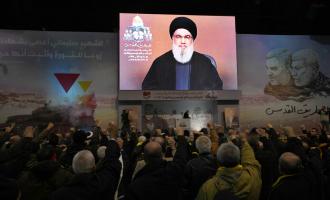The Greek Aviation Industry may not be able to finally deliver the C-130s and P-3s and some Super Puma that are "rotting" in its facilities and are so much needed by the country's Armed Forces, but it has also concluded an agreement to put in operation a modern infrastructure, within its facilities, for the assembly, integration and testing (AIT) of space hardware and satellites.
The fact that things, with the exception (fortunately) of the F-16 VIPER programme, are progressing or, more correctly, not progressing as they should be, is well known and this is now evident even from the delay in the announcement of the specific project launch.
The Greek Aviation Industry itself in a statement a month and a bit later states that:
"On November 27, 2023, the opening of the HAITF (Hellenic Assembly, Integration and Testing Facility) project took place at the Hellenic Aviation Industry (HIA) facilities in Schimatari.
The main objective of the HAITF project is to design, implement and commission a modern infrastructure, within the facilities of Hellenic Aerospace Industries SA, for the assembly, integration and testing (AIT) of space hardware and satellites.
The HAITF infrastructure will be able to accommodate space hardware and small satellites to support the process of assembly and integration of satellite subsystems into the spacecraft, as well as to conduct operational and environmental testing.
- The assembly and integration process is the final stage of the construction of a satellite system, typically involving the physical and electrical connection of the satellite subsystems to the spacecraft.
- Operational tests shall verify the functionality and reliability of the satellite subsystems, including the functionality of the complete system: before, during and after the environmental tests.
- The environmental tests simulate the space environmental conditions, starting from the launch of the satellite up to its placement in orbit. These tests guarantee that the satellites will be alive in space, will operate reliably during their life cycle and also guarantee the success of the satellite mission. These tests require appropriate facilities (e.g. vibration test system or thermal vacuum chamber) and equipment.
The HAITF project has a completion schedule of three (3) years and is funded by the European Commission under the Recovery and Resilience Plan (RRF) and supported by the European Space Agency (ESA), acting on behalf of the Greek Ministry of Digital Governance for the Greek National Space Programme.
The HAITF project represents an important opportunity for EAB to expand its turnover in the field of space applications, to acquire expertise in the construction and testing of satellite systems, and to create new skilled jobs for young scientists.
EAB is proud of this leading technological innovation, which belongs to the category of space applications, and is committed to continue to contribute to the support of the Greek National Satellite Program.
EAB remains a pioneer and innovator, building for our country an important fund of expertise that exploits, develops and applies technological advances.
About the European Space Agency
The European Space Agency (ESA) is Europe's gateway to space.
ESA is an intergovernmental organisation created in 1975 with a mission to shape the development of Europe's space capability and to ensure that investments in space bring benefits to the citizens of Europe and the world.
ESA has 22 member states: Austria, Belgium, the Czech Republic, Denmark, Estonia, Finland, France, Germany, Greece, Hungary, Ireland, Italy, Luxembourg, the Netherlands, Norway, Poland, Portugal, Romania, Spain, Sweden, Switzerland, the Netherlands, and the United Kingdom. Latvia, Lithuania, Slovakia, Latvia, Lithuania and Slovenia are associate members.
ESA has established formal cooperation with four EU Member States. Canada participates in some ESA programmes under a cooperation agreement.
By coordinating the financial and intellectual resources of its members, ESA can undertake programmes and activities that go far beyond the scope of any single European country. In particular, it cooperates with the EU to implement the Galileo and Copernicus programmes, and with Eumetsat to develop meteorological missions.
Let's hope that this project at least 'runs' as it should...




